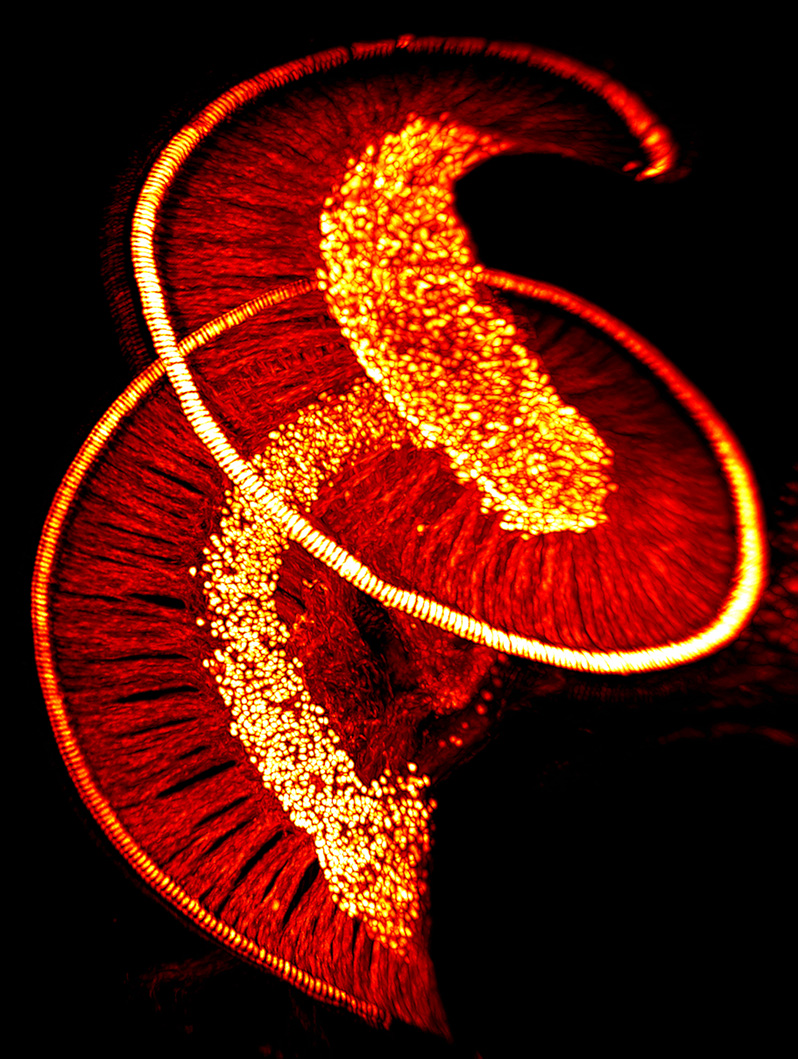Deafness

Optogenetic Restoration
The sound signal that our ear receives is converted into electrical signals in the cochlea by the sensory cells there, called “hair cells”. These are then transmitted by the subsequent nerve cells to the brain and processed there, creating a hearing impression. If these hair cells are damaged, no signals can be transmitted to the nerve cells and the patients are deaf. This type of “defect” can be bypassed by an electrical cochlear implant (eCI), provided that the auditory nerve itself is still functional. The implant is an electrode carrier that electrically stimulates the existing nerve cells in the cochlea. The nerve endings in the inner ear pick up these impulses and transmit them to the brain. This way, sounds and speech in the environment can be perceived again. Nationwide, about one million people are eligible for a cochlear implant (CI) due to their pronounced hearing loss. (Source: Techniker Krankenkasse)
However, eCI wearers find it difficult to understand speech in noisy environments and to recognize melodies. Moreover, they usually have no access to speech and music melodies. This is largely due to the wide distribution of the electrical signal from the electrode contacts in the cochlea, which leads to a low frequency resolution of the eCI.
Optogenetic stimulation aims to overcome the aforementioned limitation, as light can be used more spatially targeted and thus stimulate specific parts of the cochlea more precisely. As a result, optical cochlear implants (oCI) can achieve greater frequency selectivity and thus significantly improve the hearing impression.
This gives hope for another big step towards normality for patients: communication in everyday situations and participation in normal social life.

